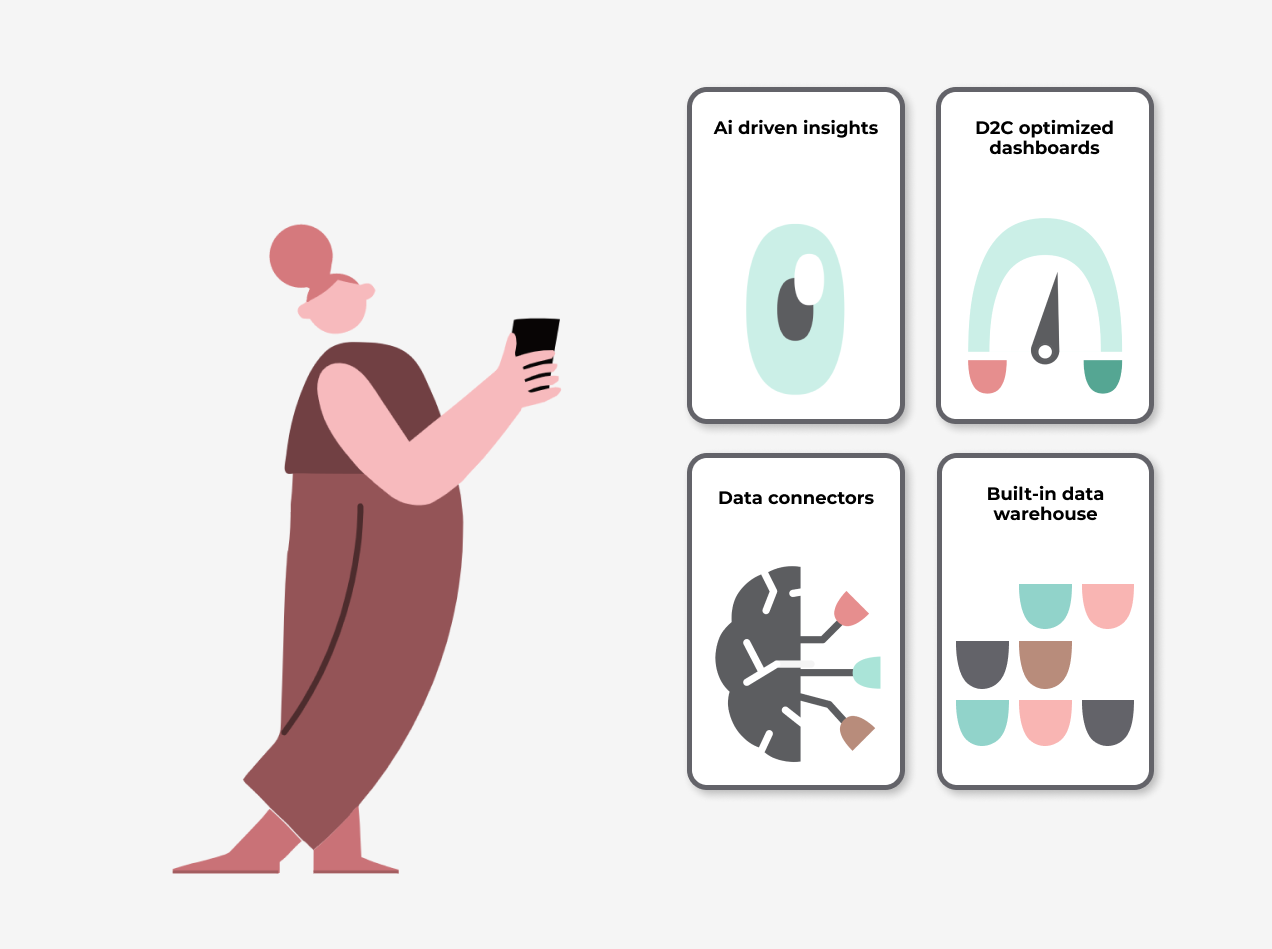First, let's go through the basics of the Ellis 9-field matrix of customers. The design of the 9-field is made simple and easy to analyse. As its name implies it consists of 9 different fields. The fields in the matrix are divided into three colour-coded columns. The green column shows active customers on the left, customers at risk to churn in the red middle column, and churned customers in the grey column on the right. The 9-field has three rows based on the number of orders the customer has done within the time frame. These elements together form the 9-field matrix.

The idea is to get customers from the grey churned column to the green active customers' column with personalised targeting and marketing communication. More specifically from the upper right corner of the matrix to the down left corner. Of course, the path there is not straight. In the upper right corner, we see the customers who have ordered once and not returned to buy from the company in more than three months. That means they are no longer active customers, for some reason they have not returned to shop. The customers in the down left field order frequently time after time. To have loyal customers who return to order from your online store is the kind of customer every online business is looking for.
What fields to target and how will the 9-field help me with churned customers?
As said the main goal is to get as many customers to the green column and on the other hand as few to the grey column as possible. What fields to prioritise depends for example on how many customers there are, what has happened in the past (How long the store has been online, what type of campaigns has been running, etc.), and what are the goals for the future. Overall every merchant should have a plan to retain their customers in addition to gathering new customers. That is relatively easy because every past customer already has some connection with the company.
At this point, it is important to acknowledge the difference between the shades of the fields. The darker the colour is the more orders those customers have done and the more valuable that customer is. However, that does not mean that the light-coloured fields are not important because the goal is to move the customer mass from light to dark-coloured fields. This logic applies to all the columns.
The red column in the middle is the chance to prevent customers from churning and returning them to active customers. It is crucial to target them before they are churned because then the product and the shopping experience are remembered better. For the customers who have already churned it is best, to begin with, the more loyal customers and then proceed to the one-time buyers.
Now what we can do in practice is we can get the customers' information from the matrix and target them directly or use the lists to create look-alike audiences for digital marketing. This segmentation can go even deeper and we can distinguish different customer behaviour inside the fields e.g. if we want to recommend or give a discount on product x to all who have bought product y or present a new product launch, especially for those who are previously interested in similar products. By clicking on the segment field a pop-up will show more specific information about the customers. You can see for example customer ID, email, city name and the total spend of these customers.
Why should you use the customer segmentation 9-field?
- Targeting customers who have already bought your products or showed interest in your brand for example by subscribing to your newsletter are easier and more cost-effective to market for.
- Find the right customer audience and target them efficiently based on their behaviour.
- Reach the loyal customers who are churned and customers who are at risk to churn before that happens.
- Achieve great personalised customer service and make a profit out of that!

